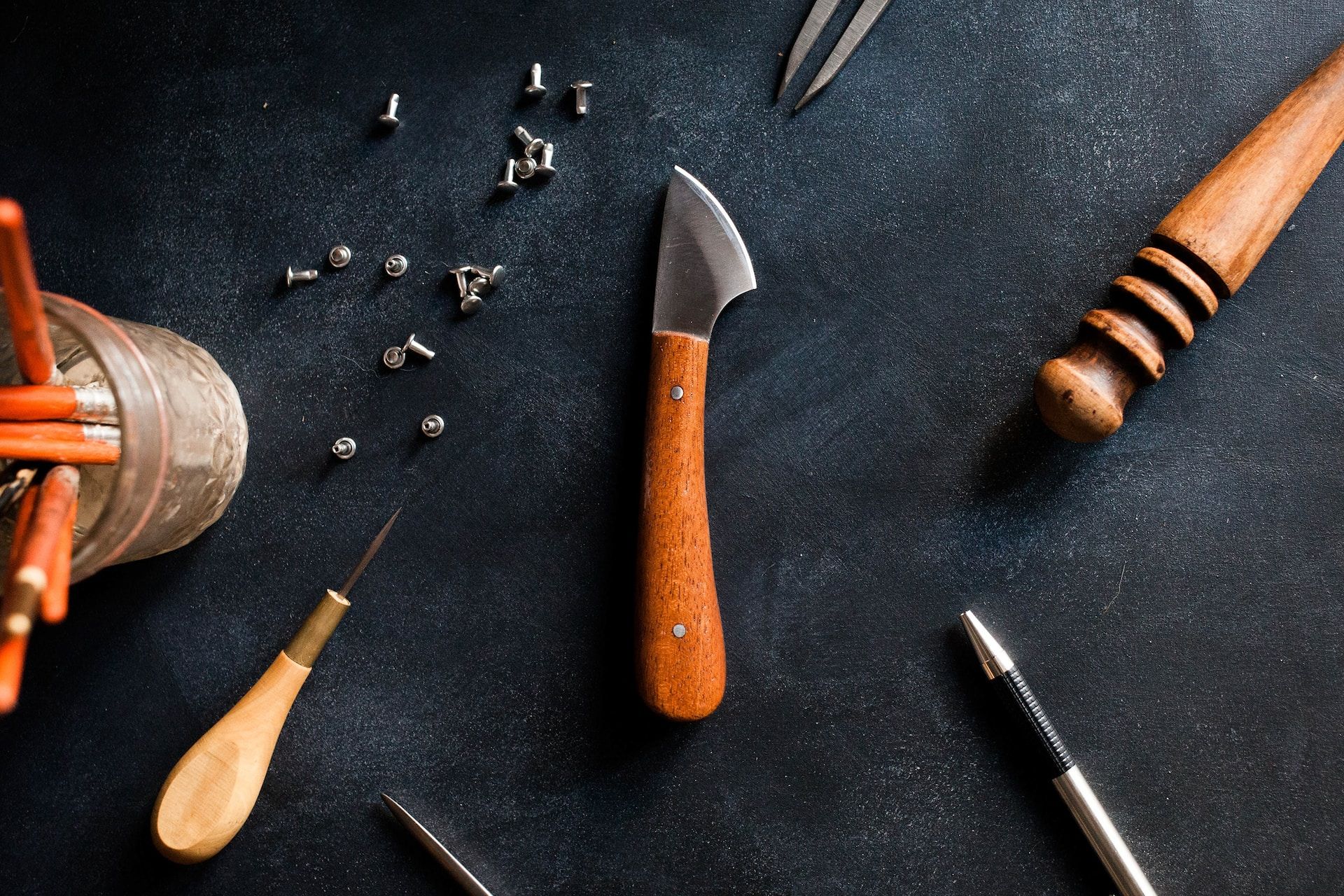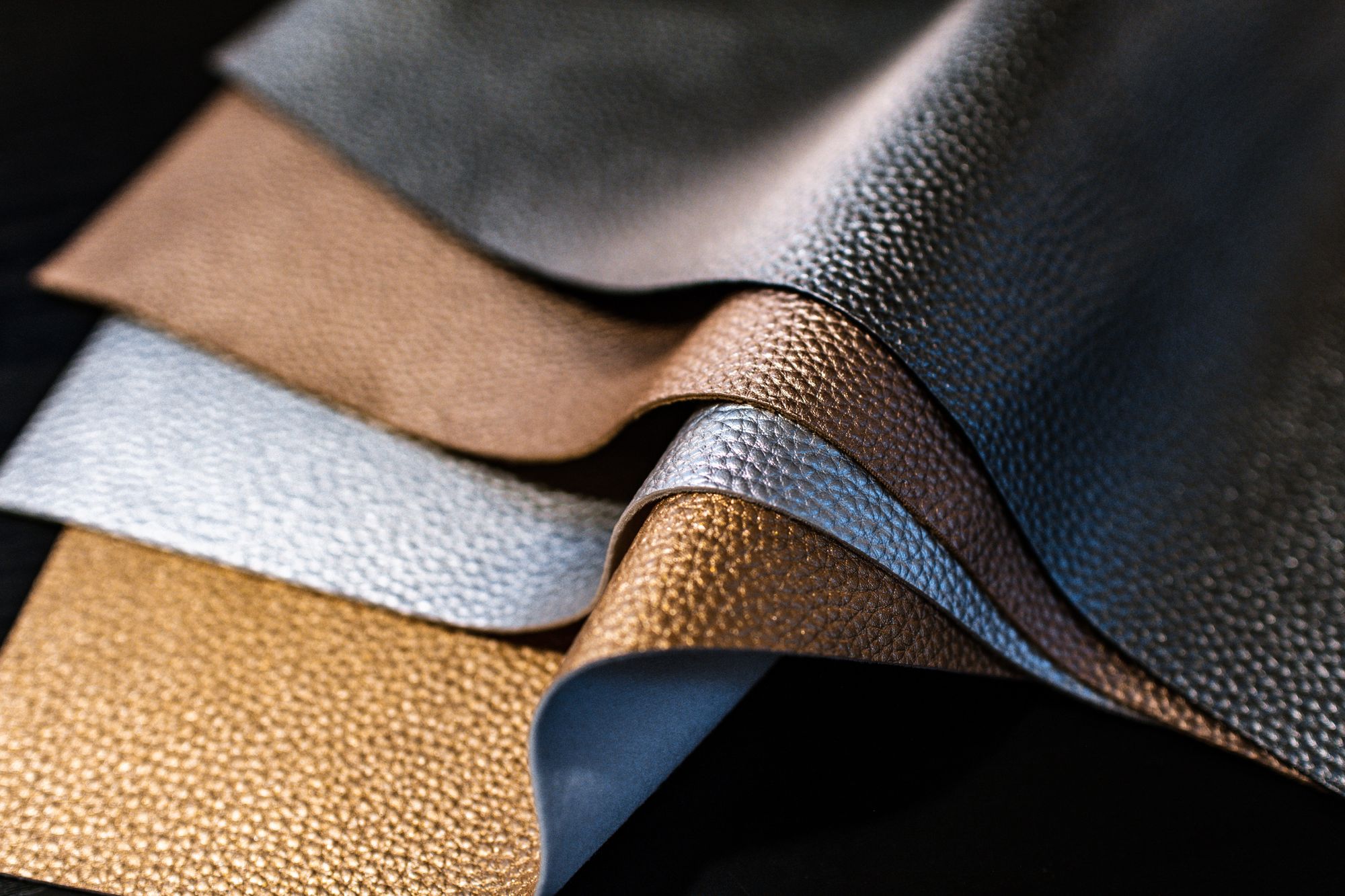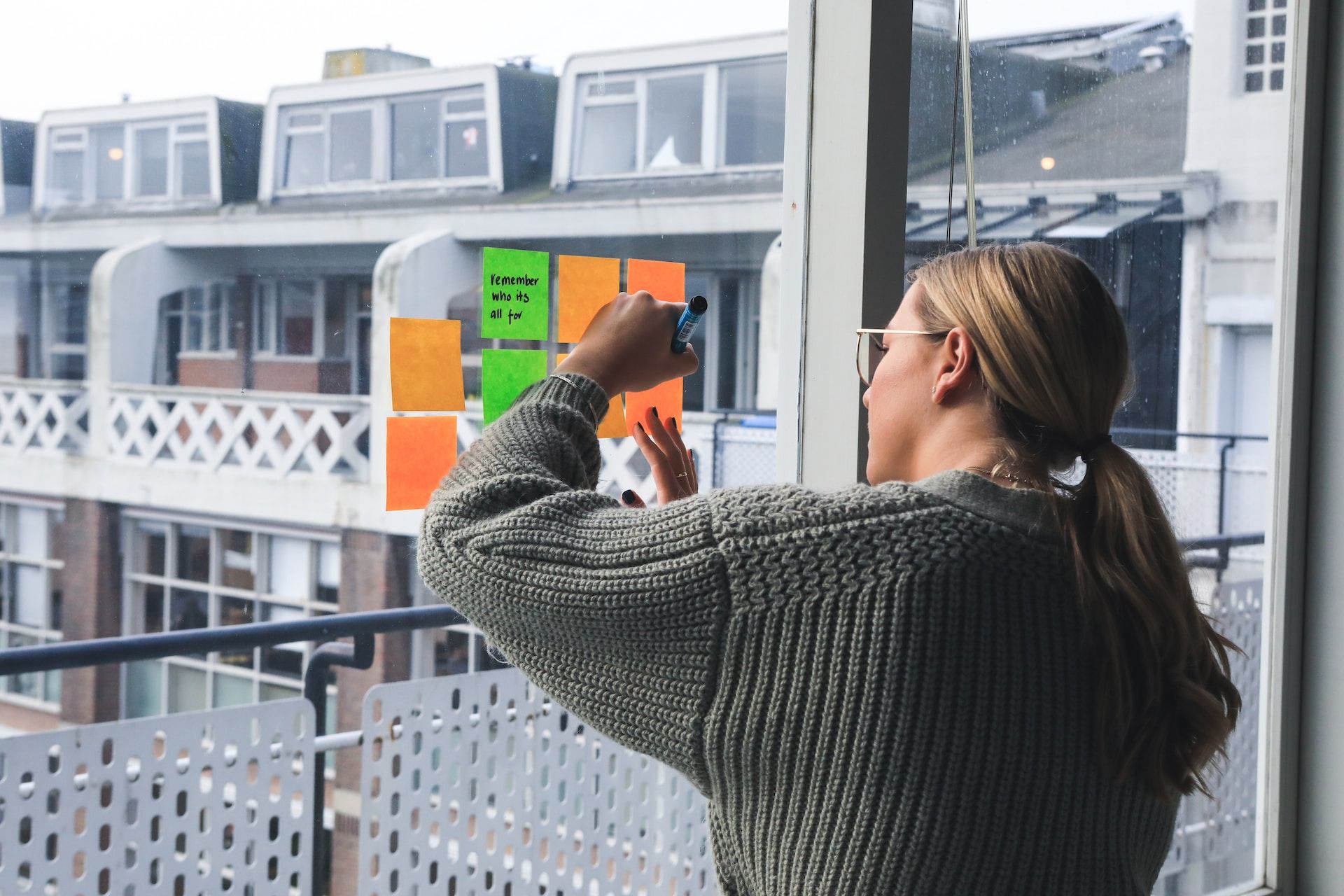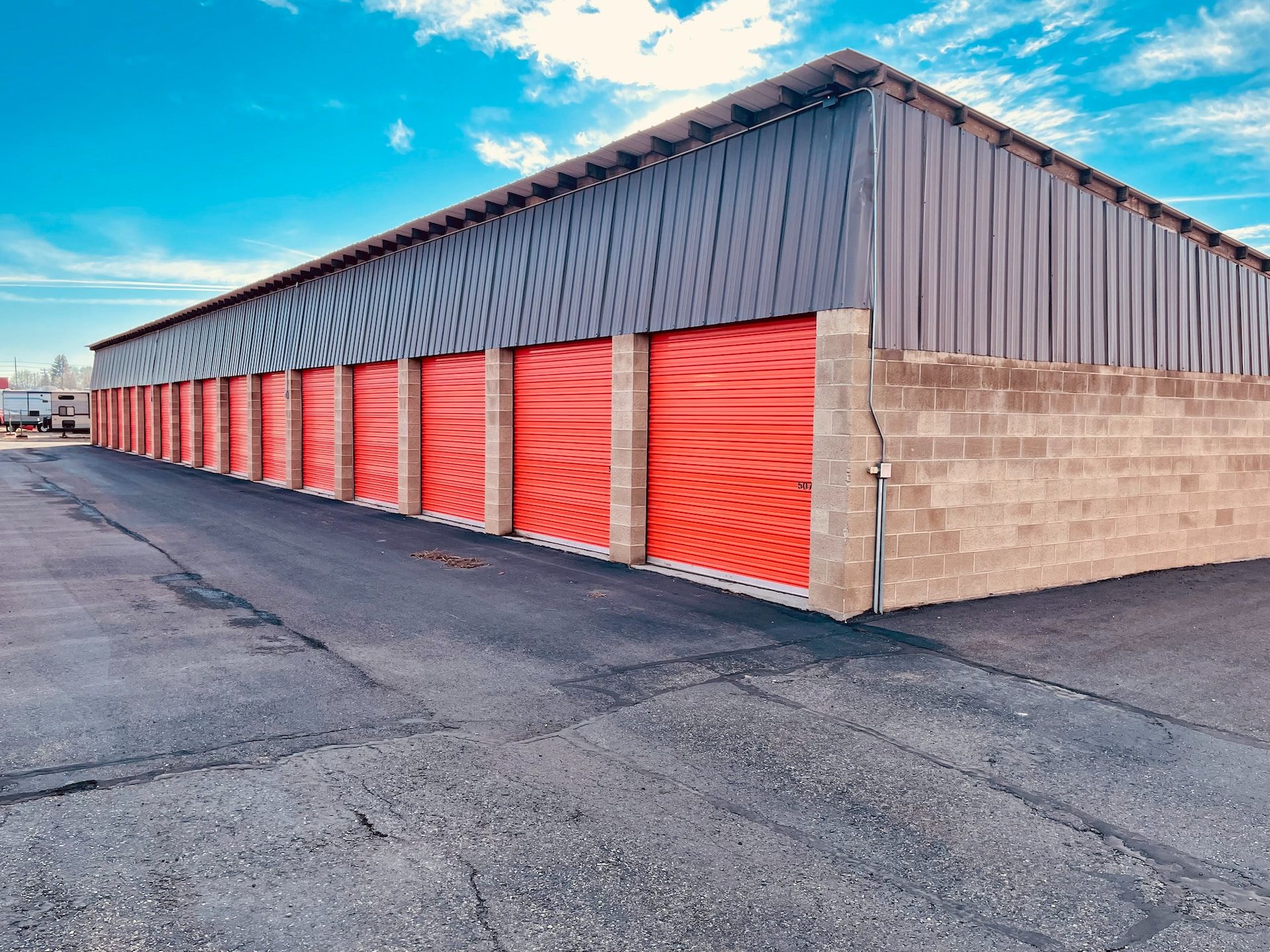Leather is a popular material used in the production of a variety of products. It consists of certain products such as clothing, shoes, bags, furniture, car interiors, and so on. However, proper storage and transportation of leather products are essential for maintaining their quality and prolonging their lifespan.
Leather is a natural material that is susceptible to damage from environmental factors such as temperature, humidity, light, dust, and pressure. Improper storage and transportation can lead to discoloration, mold growth, cracking, and other types of damage, which can be costly to repair or may even render the product unusable.
To help ensure that leather products remain in good condition during storage and transportation, it's important to use proper storage and transportation methods.
In today’s guide, we will provide an overview of the importance of proper leather storage and transportation, as well as detailed information on best practices for storing and transporting leather products. By following these tips, leather product owners, manufacturers, and distributors can help ensure the quality and longevity of their products.
Let’s take a look at the table of content below:
- Importance of Proper Leather Storage and Transportation
- The Impact of Improper Storage and Transportation on the Quality of Leather
- Storage Methods for Leather
- Transportation Methods for Leather
- Best Practices for Leather Storage and Transportation
- Frequently Asked Questions (FAQs) Associated with Leather Storage and Transportation Methods
- Wrapping Up
- How Deskera Can Assist You?
Let's get started!
Importance of Proper Leather Storage and Transportation
Leather is a valuable and versatile material used in a wide range of products, including apparel, footwear, furniture, and accessories. However, improper storage and transportation can lead to damage, discoloration, and deterioration of the leather, reducing its quality and lifespan.
Proper storage and transportation methods are essential to maintain the quality and appearance of leather products, and to prevent potential losses due to damage or spoilage.
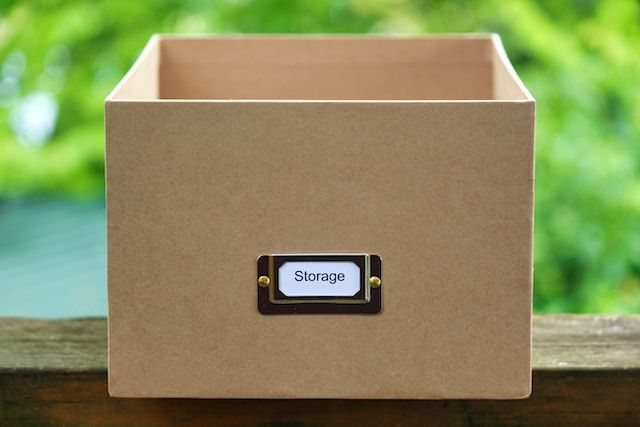
These methods include controlling temperature and humidity, protecting from light, dust and dirt, proper stacking and shelving, as well as cushioning and padding during transportation.
By following best practices for leather storage and transportation, individuals and businesses can ensure the longevity and value of their leather products.
The Impact of Improper Storage and Transportation on the Quality of Leather
Improper storage and transportation can have a significant impact on the quality of leather, leading to damage, discoloration, and deterioration.
Following, we've discussed some important examples of the impact of improper storage and transportation on leather:
Temperature and Humidity: Exposure to extreme temperatures and fluctuations in humidity can cause leather to dry out and crack or become moldy and mildewed. This can result in a loss of flexibility and strength, leading to brittleness and eventual deterioration.
Light: Leather is sensitive to light and can fade or discolor over time if exposed to direct sunlight or bright artificial light. This can result in a loss of color and vibrancy, as well as a change in texture.
Dust and Dirt: Accumulation of dust and dirt can cause leather to become dull and unattractive, and can also lead to scratches and abrasions. This can make the leather look worn and damaged.

Pressure and Friction: Pressure and friction during transportation can cause leather to become creased or warped, resulting in permanent damage. This can affect the appearance and integrity of the leather.
Moisture: Exposure to moisture can cause leather to become water-stained or discolored, leading to a loss of color and vibrancy. It can also cause mold and mildew to develop, which can result in deterioration and weakening of the leather.
Overall, improper storage and transportation can have a significant impact on the quality of leather products, leading to loss of value, reduced lifespan, and potentially costly repairs or replacements.
By following proper storage and transportation methods, individuals and businesses can protect their investment in leather products and ensure their longevity and value.
Storage Methods for Leather
Storage methods for leather are critical to maintaining the quality and lifespan of leather products. Furthermore, these methods include controlling temperature and humidity, providing proper ventilation, protecting from light, dust, and dirt, and using appropriate stacking and shelving techniques.
By following these methods, individuals and businesses can ensure their leather products remain in good condition and avoid damage or deterioration over time. In the next section, we will explore these storage methods in more detail.
Temperature and Humidity Control
Leather is a natural material that is sensitive to changes in temperature and humidity. Extreme temperatures and fluctuations in humidity can cause leather to dry out and crack, or become moldy and mildewed. Therefore, it is crucial to control the temperature and humidity levels when storing leather products.
The ideal temperature range for storing leather is 60-70°F (15-21°C), while the ideal humidity range is 40-50%. You can use a thermometer and a hygrometer to monitor the temperature and humidity levels in the storage area.
Furthermore, if the humidity is too high, a dehumidifier can be used to reduce the moisture in the air. If the humidity is too low, a humidifier can be used to add moisture to the air.
If you are storing leather products long-term, consider using a climate-controlled storage unit. These units are designed to maintain a constant temperature and humidity level, which is ideal for preserving the quality of leather products.
By controlling the temperature and humidity levels, you can prevent damage to your leather products and ensure they remain in good condition for further ahead.
Air Circulation and Ventilation
Air circulation and ventilation are crucial when storing leather products, as it allows for proper ventilation and prevents the growth of mold and mildew. Proper ventilation can be achieved by using fans, air conditioning, or by opening windows and doors.
It is important to avoid storing leather products in airtight containers or plastic bags, as this can trap moisture and cause the leather to become moldy or discolored. Instead, leather products should be stored in a well-ventilated area with good air circulation.

If you are storing leather products in a closet or cabinet, make sure to leave enough space around the products to allow for proper air circulation. You can also use a fan to circulate air and prevent the buildup of moisture.
Additionally, avoid storing leather products in damp or humid areas, such as basements or attics, as these areas are prone to mold and mildew growth. If you must store leather products in these areas, consider using a dehumidifier to reduce the moisture in the air and prevent mold growth.
By ensuring proper air circulation and ventilation, you can prevent mold and mildew growth and maintain the quality of your leather products.
Protection from Light
Protection from light is essential when storing leather products, as exposure to direct sunlight or bright artificial light can cause leather to fade or discolor over time. Therefore, leather products should be stored in a dark, cool place away from windows or light sources.
If you are storing leather products on open shelving or in a cabinet with glass doors, consider using curtains or blinds to block out sunlight. Alternatively, you can cover leather products with a breathable cloth to protect them from direct sunlight.
Furthermore, UV radiation is particularly harmful to leather, so it is important to avoid exposing leather products to sunlight or artificial light sources that emit UV radiation, such as fluorescent lights. UV-blocking film can be applied to windows to reduce UV exposure and protect leather products from fading or discoloration.
It is also essential to avoid exposing leather products to heat sources such as radiators, stoves, or fireplaces, as this can cause the leather to dry out and become brittle.
You may avoid fading and discoloration and preserve the quality and beauty of your leather products for years to come by shielding them from light.
Protection from Dust and Dirt
Protection from dust and dirt is crucial when storing leather products, as dust and dirt can scratch and damage the leather. Therefore, leather products should be stored in a clean, dust-free environment.
One way to protect leather products from dust and dirt is to cover them with a breathable cloth or dust cover. This will protect the leather from dust and dirt while allowing air to circulate around the products. The cloth or cover should be clean and free from any debris or dirt.
If you are storing leather products in a closet or cabinet, make sure to clean the area thoroughly before storing the products. Sweep or vacuum the area to remove any dust or debris, and wipe down the shelves or surfaces with a damp cloth to remove any dirt or grime.
Avoid using any cleaning products that contain harsh chemicals or alcohol, as these can dry out and damage the leather. Instead, use a mild soap and water solution or a leather-specific cleaning product to gently clean the leather before storing it.
Regularly inspect leather products for any signs of dust or dirt buildup, and clean them as needed to prevent damage to the leather.
Your leather products will stay in good shape for years to come if you keep them from dust and filth. This will help prevent scratching and damage to the leather.
Proper Stacking and Shelving
Proper stacking and shelving are essential when storing leather products, as it helps to prevent damage to the leather and maximize storage space.
When stacking or shelving leather products, there are several things to consider:
Avoid stacking heavy items on top of leather products, as this can cause the leather to become crushed or distorted. Instead, place heavier items on the bottom shelves or in separate storage containers.
When stacking leather products, make sure to place them in a flat, even position to prevent any creases or folds from forming. Avoid stacking too many products on top of each other, as this can also cause damage to the leather.
If you are storing leather products on open shelves, consider using shelf liners to prevent any scratches or marks on the leather. The shelf liners should be clean and free from any debris or dirt.
Avoid storing leather products in a way that exposes them to sharp edges or corners, as this can cause scratching or tearing of the leather.
If you are storing leather products in a closet or cabinet, make sure to leave enough space between each product to allow for air circulation and prevent any rubbing or friction between the products.
When storing leather bags or purses, consider stuffing them with tissue paper or bubble wrap to help maintain their shape and prevent any creases or wrinkles from forming.
Your leather goods will stay in good shape for many years if you adhere to these recommendations for proper stacking and shelving. By doing so, you can maximize your storage space and minimize damage to your leather goods.
Transportation Methods for Leather
Transportation of leather products can be a challenging task, as leather is a delicate material that can be easily damaged during transit. Whether you are transporting leather products for personal or commercial purposes, it is essential to use proper transportation methods to ensure that the products arrive at their destination in good condition.
Following, we will discuss some of the best practices for transporting leather products, including packaging, labeling, and handling.
Packaging and Wrapping
Proper packaging and wrapping are essential when transporting leather products to prevent damage during transit.
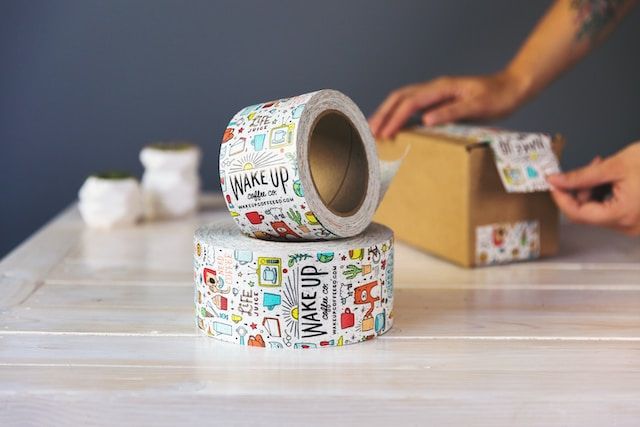
Following, we've discussed some tips for packaging and wrapping leather products:
Use protective packaging materials: Use protective materials such as bubble wrap, foam, or paper to wrap leather products. These materials can help absorb any shocks or impacts during transportation and prevent scratches or other damage to the leather.
Avoid plastic wrap: Avoid using plastic wrap or bags to wrap leather products, as this can cause the leather to sweat and damage the material.
Use appropriate boxes or containers: Use sturdy boxes or containers to transport leather products. The box or container should be appropriately sized for the product, allowing enough space for packaging materials to cushion the product.
Label boxes or containers: Label each box or container with the contents, the fragility of the product, and any handling instructions. This will help ensure that the product is handled correctly during transport.
Seal the packaging: Make sure to seal the packaging securely to prevent any shifting or movement during transport. This will help prevent damage to the leather product.
Avoid sharp edges: Make sure that any packaging materials or boxes used do not have any sharp edges that can scratch or damage the leather product.
You can safeguard your leather goods during transit and make sure they reach their destination in good condition by adhering to these packaging and wrapping suggestions.
Cushioning and Padding
In addition to proper packaging and wrapping, cushioning and padding are also crucial for protecting leather products during transportation. Here are some tips for cushioning and padding leather products:
Use appropriate padding materials: Use padding materials such as foam, bubble wrap, or air pillows to cushion the leather product during transport. These materials can help absorb any shocks or impacts during transit and prevent scratches or other damage to the leather.
Fill empty spaces: Fill any empty spaces in the packaging with padding materials to prevent the product from shifting or moving during transport. This will help prevent damage to the leather.
Use appropriate cushioning thickness: Make sure to use an appropriate thickness of padding materials. If the padding is too thin, it may not provide adequate protection, but if it is too thick, it may take up too much space in the packaging.
Place padding on all sides: Place padding materials on all sides of the leather product to ensure that it is adequately protected during transportation.
Avoid over-packing: Do not over-pack the product with padding materials, as this can cause the leather to become compressed and lose its shape.
Test the packaging: Before transporting the product, test the packaging to ensure that it can withstand the rigors of transportation. This will help prevent any surprises during transit.
By following these cushioning and padding tips, you can ensure that your leather products are adequately protected during transportation, minimizing the risk of damage and ensuring that they arrive at their destination in good condition.
Protection from Moisture and Heat
Leather products are particularly sensitive to moisture and heat. These elements can cause the leather to warp, crack, or become discolored, which can be irreversible damage. Here are some tips for protecting leather products from moisture and heat during transportation:
Use waterproof packaging: Use waterproof packaging, such as plastic bags or waterproof boxes, to prevent moisture from penetrating the packaging.
Avoid exposure to direct sunlight: Do not expose leather products to direct sunlight during transportation, as this can cause the leather to discolor or warp.
Use insulated packaging: If transporting leather products in hot temperatures, use insulated packaging to protect the leather from heat exposure.
Store leather products in a temperature-controlled environment: During transportation, store leather products in a temperature-controlled environment to prevent damage from heat or humidity.
Use desiccants: Use desiccants, such as silica gel packets, to absorb any moisture in the packaging during transport.
Avoid moisture-prone areas: When transporting leather products, avoid areas that are prone to moisture, such as damp basements or humid environments.
By following these tips, you can help protect your leather products from damage due to moisture and heat during transportation. This will help ensure that the products arrive at their destination in good condition, ready for use or sale.
Protection from Pressure and Friction
Leather products can be easily damaged by pressure and friction during transportation. This can result in creases, scuffs, or scratches that can diminish the value and appearance of the product.
Following, we’ve discussed some crucial tips for protecting leather products from pressure and friction during transportation:
Use appropriate packaging: Use packaging materials that provide adequate protection against pressure and friction, such as padded envelopes or boxes.
Avoid over-packing: Do not over-pack the product, as this can cause pressure and friction damage due to movement within the packaging.
Wrap individual items separately: If transporting multiple leather items together, wrap each item separately to prevent them from rubbing against each other during transportation.
Use protective layers: Use protective layers, such as tissue paper or soft cloth, to separate the leather product from any other materials in the packaging.
Use corner protectors: Use corner protectors to prevent pressure and friction damage to the corners of the product during transportation.
Use appropriate transport equipment: Use appropriate transport equipment, such as dollies or hand trucks, to prevent pressure and friction damage during loading and unloading.
You may prevent pressure and friction from destroying your leather goods while they are being transported by according to the suggestions in this article. By doing this, you can ensure that the products will be delivered in good shape and made accessible for use or sale when they reach their final destination.
Best Practices for Leather Storage and Transportation
Following, we've discussed the best practices that would help ensure that your leather products are adequately protected during storage and transportation, minimizing the risk of damage and ensuring that they maintain their quality and appearance.
Identifying and Addressing Potential Risks and Hazards
Identifying and addressing potential risks and hazards is essential for ensuring the safe storage and transportation of leather products.
Following, we've discussed some common risks and hazards associated with leather storage and transportation, and how to address them:
Risk of Mold and Mildew: Leather products can develop mold and mildew if they are stored in damp or humid environments. To prevent this, store leather products in a cool, dry place with proper air circulation and ventilation. Use a dehumidifier if necessary to reduce humidity levels.
Risk of Sun Damage: Direct sunlight can cause leather products to fade or discolor. Protect leather products from sunlight by storing them in a dark place or covering them with a light-protective material.
Risk of Insect Infestation: Insects, such as moths or beetles, can damage leather products. To prevent this, store leather products in sealed containers or bags and use insect repellents if necessary.
Risk of Physical Damage: Leather products are vulnerable to scratches, creases, and dents. To prevent physical damage, use appropriate packaging and cushioning materials during transportation and store products in a safe place where they are less likely to be bumped or knocked over.
Risk of Chemical Damage: Exposure to chemicals, such as cleaning agents or pesticides, can damage leather products. Store leather products away from chemical agents and avoid using chemical cleaners or sprays on the products.
Risk of Theft: Leather products can be valuable and attractive targets for theft. Store products in a secure place and use secure transportation methods to minimize the risk of theft.
By identifying and addressing potential risks and hazards, you can help ensure the safe storage and transportation of leather products, minimizing the risk of damage or loss.
Proper Handling and Stacking Techniques
Proper handling and stacking techniques are crucial for the safe storage and transportation of leather products.

Following, we've discussed some tips for proper handling and stacking:
Handle leather products with clean, dry hands: Oils and moisture from your skin can damage leather products over time. Before handling leather products, make sure your hands are clean and dry.
Use appropriate lifting and carrying techniques: Leather products can be heavy and bulky, so use proper lifting techniques to avoid strain or injury. Lift with your legs, not your back, and carry products close to your body.
Avoid dragging or dropping leather products: Dragging or dropping leather products can cause physical damage, such as scratches or dents. Instead, carefully lift and move the products to their destination.
Stack leather products carefully: When stacking leather products, make sure to stack them flat and evenly to avoid creating pressure points that can cause damage. Use appropriate cushioning materials, such as foam or bubble wrap, between products to provide additional protection.
Store leather products in a cool, dry place: Proper storage is essential for maintaining the quality and appearance of leather products. Store products in a cool, dry place with adequate air circulation and ventilation.
Label and organize stacked products: Labeling and organizing stacked products can help you keep track of what products are stored where and make it easier to locate specific products when needed.
By following these tips, you can help ensure that leather products are handled and stacked properly, reducing the risk of damage and ensuring that they maintain their quality and appearance.
Choosing Appropriate Packaging Materials
Choosing appropriate packaging materials is crucial for ensuring the safe transportation of leather products.
Following, we've discussed some tips for choosing the right packaging materials:
Use sturdy boxes or crates: Leather products can be heavy, so it's important to choose boxes or crates that are sturdy enough to support their weight during transportation. Make sure the boxes or crates are in good condition and can withstand the rigors of shipping.
Use appropriate cushioning materials: Cushioning materials, such as foam or bubble wrap, help protect leather products from physical damage during transportation. Make sure to use enough cushioning material to fill any empty spaces in the box or crate and to provide adequate protection.
Avoid using packing peanuts: Packing peanuts can settle during transportation and may not provide adequate protection for leather products. Instead, use foam or bubble wrap to cushion products.
Use moisture-resistant packaging materials: Leather products are vulnerable to moisture damage, so it's important to use moisture-resistant packaging materials, such as plastic bags or shrink wrap, to protect them during transportation.
Label packages clearly: Clearly label packages with the name and address of the recipient, as well as any special handling instructions or warnings.
Consider using specialized packaging materials: For particularly valuable or fragile leather products, consider using specialized packaging materials, such as custom-made cases or padded envelopes, to provide additional protection during transportation.
By choosing appropriate packaging materials, you can help ensure that leather products arrive at their destination safely and in good condition, reducing the risk of damage or loss.
Preparing for Long-Term Storage and Transportation
Preparing leather products for long-term storage and transportation requires extra care to ensure that they remain in good condition. Here are some tips for preparing leather products for long-term storage and transportation:
Clean and condition leather products: Before storing or transporting leather products, make sure to clean them thoroughly with a soft, damp cloth and a mild soap or leather cleaner. After cleaning, apply a leather conditioner to keep the leather supple and prevent cracking.
Wrap leather products in acid-free tissue paper: Acid-free tissue paper helps protect leather products from moisture and damage caused by contact with other materials. Wrap each product in a layer of acid-free tissue paper before placing it in a storage container or shipping box.
Store leather products: Leather products should be stored in a cool, dry place with low humidity to prevent mold growth and other types of damage. Avoid storing leather products in areas that are subject to extreme temperatures, such as attics or basements.
Use appropriate storage containers: Leather products should be stored in containers that allow for air circulation and ventilation, such as cardboard boxes or plastic storage containers with ventilation holes. Furthermore, avoid storing leather products in airtight containers, as this can promote mold growth and damage the leather.
Label storage containers clearly: Clearly label storage containers with the contents and any special handling instructions or warnings.
Monitor stored leather products regularly: Check stored leather products regularly for signs of damage or deterioration, such as mold growth or discoloration. Take action immediately if you notice any signs of damage.
You can help keep leather goods in good condition throughout long-term storage and transportation by adhering to these suggestions. Products made of leather can be preserved for a long time with the right maintenance and care.
Frequently Asked Questions (FAQs) Associated with Leather Storage and Transportation Methods
Following, we’ve discussed some crucial frequently asked questions (FAQs) Associated with leather storage and transportation methods. Let’s learn:
Que 1: What temperature and humidity levels are ideal for storing leather?
Ans: Ideally, leather should be stored in an environment with a temperature range of 60-70°F (15-21°C) and a humidity range of 40-50%.
Que 2: How should leather products be stacked or shelved for storage?
Ans: Leather products should be stacked or shelved with enough space between them to allow air circulation and prevent pressure points that can cause warping or creasing.
Que 3: What materials should be used for cushioning and padding during leather transportation?
Ans: Materials such as bubble wrap, foam padding, and packing peanuts can be used to cushion and protect leather during transportation.
Que 4: How can leather be protected from dust and dirt during storage?
Ans: Leather products should be covered with a breathable cloth or placed in a dust bag to protect them from dust and dirt during storage.
Que 5: Can leather products be stored in plastic bags?
Ans: It is not recommended to store leather products in plastic bags, as this can trap moisture and cause the leather to become moldy or discolored. Instead, use a breathable cloth or dust bag.
Que 6: How long can leather be safely stored without damage?
Ans: Leather can be safely stored for several months to a few years if proper storage methods are followed. However, it is important to periodically check on the leather to ensure it is not deteriorating or developing mold or mildew.
Que 7: Can leather be stored in a basement or garage?
Ans: It is not recommended to store leather in a basement or garage, as these environments are often damp and can lead to mold and mildew growth. If you must store leather in these environments, take extra precautions such as using a dehumidifier or air conditioning to control humidity levels.
Wrapping Up
In conclusion, proper storage and transportation methods are essential for ensuring the quality and longevity of leather products. Leather is a natural material that is susceptible to damage from a variety of environmental factors, including temperature and humidity, light, dust, and pressure.
By taking steps to control these factors and protect leather products during storage and transportation, you can help ensure that they arrive at their destination in good condition and remain in good condition for years to come.
Some of the best practices for leather storage and transportation include controlling temperature and humidity, providing adequate air circulation and ventilation, protecting leather from light, dust, and moisture, using appropriate cushioning and packaging materials, and properly handling and stacking leather products.
By identifying and addressing potential risks and hazards, choosing appropriate packaging materials, and preparing leather products for long-term storage, you can help ensure their safety and preservation.
Owners, producers, and sellers of leather goods can improve the durability and quality of their items while lowering the possibility of loss or damage during storage and transportation by implementing these recommendations. Leather items can be used and enjoyed for many years if they are properly maintained and cared for.
How Deskera Can Assist You?
Deskera's integrated financial planning tools allow investors to better plan their investments and track their progress. It can help investors make decisions faster and more accurately.
Deskera Books enables you to manage your accounts and finances more effectively. Maintain sound accounting practices by automating accounting operations such as billing, invoicing, and payment processing.

Deskera CRM is a strong solution that manages your sales and assists you in closing agreements quickly. It not only allows you to do critical duties such as lead generation via email, but it also provides you with a comprehensive view of your sales funnel.
Deskera People is a simple tool for taking control of your human resource management functions. The technology not only speeds up payroll processing but also allows you to manage all other activities such as overtime, benefits, bonuses, training programs, and much more. This is your chance to grow your business, increase earnings, and improve the efficiency of the entire production process.
Final Takeaways
We've arrived at the last section of this guide. Let's have a look at some of the most important points to remember:
- Proper storage and transportation methods are essential to maintain the quality and appearance of leather products, and to prevent potential losses due to damage or spoilage.
- Exposure to extreme temperatures and fluctuations in humidity can cause leather to dry out and crack or become moldy and mildewed. This can result in a loss of flexibility and strength, leading to brittleness and eventual deterioration.
- Storage methods for leather are critical to maintaining the quality and lifespan of leather products. These methods include controlling temperature and humidity, providing proper ventilation, protecting from light, dust, and dirt, and using appropriate stacking and shelving techniques.
- Air circulation and ventilation are crucial when storing leather products, as it allows for proper ventilation and prevents the growth of mold and mildew. Proper ventilation can be achieved by using fans, air conditioning, or by opening windows and doors.
- UV radiation is particularly harmful to leather, so it is important to avoid exposing leather products to sunlight or artificial light sources that emit UV radiation, such as fluorescent lights. UV-blocking film can be applied to windows to reduce UV exposure and protect leather products from fading or discoloration.
- One way to protect leather products from dust and dirt is to cover them with a breathable cloth or dust cover. This will protect the leather from dust and dirt while allowing air to circulate around the products. The cloth or cover should be clean and free from any debris or dirt.
- Leather products should be stored in containers that allow for air circulation and ventilation, such as cardboard boxes or plastic storage containers with ventilation holes. Avoid storing leather products in airtight containers, as this can promote mold growth and damage the leather.
Related Articles
